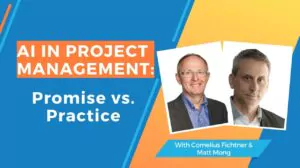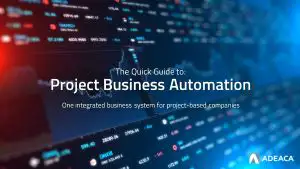With any project, there’s a definite start and end, and more often than not, they are constrained by time. The project lifecycle provides the foundation of the necessary actions that need to be performed at each stage of a project, ensuring that the project moves along according to plan.
Project lifecycle management, or the management of the project lifecycle refers to the overall handling of a project or portfolio of projects as they progress through the stages of the project lifecycle starting with initiation, to planning, to execution, and finally closeout.
Managing projects is no easy task. Especially complex projects with thousands of tasks, lots of moving parts, and many different stakeholders involved. Effective project lifecycle management is typically carried out by the PMO, ensuring the different departments, employees, and information involved with the project is streamlined and everyone is on the same page. Managing the entire project lifecycle from start to finish ensures projects are delivered on time and within budget.
If you think about it, project lifecycle management is more than just project management. It’s the discipline of managing a project lifecycle as a business. When delivering projects is crucial to the success of your business, it’s important to focus on managing the project lifecycle like a business. More specifically, this means managing all the project processes and business requirements at each stage in an integrated fashion. Only by running your projects like a business can companies structure their processes in a way that ensures projects are delivered on time and on budget.
Current Project Solutions do not Provide End-to-End Project Lifecycle Management
While many solutions claim to manage the entire project lifecycle, oftentimes, they lack certain requirements necessary to run an entire project. Take for example, SAP PS. As part of SAP’s Project and Portfolio Management tool that helps manage the execution side of projects, SAP PS is not a project business system. It’s limited in its capabilities to benefit project-based processes.
For example, let’s look at the work breakdown structure. In SAP, managing cost is often done in the WBS, which is not an effective solution. To manage your project business, you need a dedicated CBS that’s separate but linked to your WBS. Companies using SAP PS often end up managing their project financials in spreadsheets, something that’s very common for a lot of companies. The fact is, many companies end up purchasing other applications to fill their needs gap for a specific task, making it difficult and tedious to manually integrate all the project data together.
Project Business Automation: Covering the Entire Project Business Process
Project Business Automation is the only process-first business system designed to support project-based business processes from end-to-end. It’s not a gap-filling tool, but rather a comprehensive, all-in-one business system that covers the entire project lifecycle and business management needs. This means everyone within the organization is able to work from one source of truth, creating better visibility and enabling productivity and effectiveness across the company.
Let’s break it down.
Initiation: Building a project can take hours or even days seeing as the project manager has to build each task and gather information from different departments and stakeholders to create the project plan and cost estimates. With Adeaca PBA’S Project Modeler, a user can configure an entire project in minutes through predefined components and rules, building an accurate project plan and estimate in a few clicks. PBA also includes the work breakdown structure that works parallel with the cost breakdown structure, budget at completion, time-phased cost, revenue, and cash flow schedule.
Planning: At this stage, the project has been approved, so now creating a project plan includes the tasks, schedule, resources, and constraints. At this point the budget is also created, and risk should be identified as well as mitigation plans. Adeaca PBA’s Project Breakdown Structure component allows companies to take massive, complex projects and break it down into more manageable components that can be run concurrently by separate project teams and managers.
Execution: This phase is where the work gets done. Project managers make sure tasks are done on time and there are no hiccups along the way. A big part of this phase is constant monitoring and controlling, managing the operations and financials. As part of Adeaca PBA, Project Autopilot automates your project monitoring and control. It constantly looks into your projects and detects important changes that may indicate a problem, then immediately alerts the right people about the issues so it can be dealt with. Every part of every project is watched at all times.
Period close (month-end): When all the tasks are completed, the project owner signs off on all deliverables, closing the project. At this point the project is analyzed and earned value analysis takes place to evaluate the project’s cost and time efficiency, measuring overall project health and performance. Adeaca PBA provides fully integrated and automated earned value management and analysis capabilities.
When all aspects of a project’s lifecycle is brought together in one comprehensive business system, you end up decreasing risk, ensuring projects are able to be completed on time and on budget. Adeaca PBA integrates all project data on one platform seamlessly and in real time, allowing better decisions to be made on accurate, timely data.
Download the Project Business Automation Quick Guide to learn more.











